In regards to all the “news” in the world; and the role that the United States plays…
I am a US citizen. I am beginning to understand what things might have looked like at the end of the Roman Empire.
Ha. Ha. Great quote. Accurate. Love it.
Read this article… it is what is REALLY going on behind the scenes right now.
A panicked Empire tries to make Russia an ‘offer it can’t refuse’
By Pepe Escobar, originally posted at The Cradle, reposted with the author’s permission
Realizing NATO’s war with Russia will likely end unfavorably, the US is test-driving an exit offer. But why should Moscow take indirect proposals seriously, especially on the eve of its new military advance and while it is in the winning seat?
Those behind the Throne are never more dangerous than when they have their backs against the wall.
Their power is slipping away, fast: Militarily, via NATO’s progressive humiliation in Ukraine; Financially, sooner rather than later, most of the Global South will want nothing to do with the currency of a bankrupt rogue giant; Politically, the global majority is taking decisive steps to stop obeying a rapacious, discredited, de facto minority.
So now those behind the Throne are plotting to at least try to stall the incoming disaster on the military front.
As confirmed by a high-level US establishment source, a new directive on NATO vs. Russia in Ukraine was relayed to US Secretary of State Antony Blinken. Blinken, in terms of actual power, is nothing but a messenger boy for the Straussian neocons and neoliberals who actually run US foreign policy.
The secretary of state was instructed to relay the new directive – a sort of message to the Kremlin – via mainstream print media, which was promptly published by the Washington Post.
In the elite US mainstream media division of labor, the New York Times is very close to the State Department. and the Washington Post to the CIA. In this case though the directive was too important, and needed to be relayed by the paper of record in the imperial capital. It was published as an Op-Ed (behind paywall).
The novelty here is that for the first time since the start of Russia’s February 2022 Special Military Operation (SMO) in Ukraine, the Americans are actually proposing a variation of the “offer you can’t refuse” classic, including some concessions which may satisfy Russia’s security imperatives.
Crucially, the US offer totally bypasses Kiev, once again certifying that this is a war against Russia conducted by Empire and its NATO minions – with the Ukrainians as mere expandable proxies.
‘Please don’t go on the offensive’
The Washington Post’s old school Moscow-based correspondent John Helmer has provided an important service, offering the full text of Blinken’s offer, of course extensively edited to include fantasist notions such as “US weapons help pulverize Putin’s invasion force” and a cringe-worthy explanation: “In other words, Russia should not be ready to rest, regroup and attack.”
The message from Washington may, at first glance, give the impression that the US would admit Russian control over Crimea, Donbass, Zaporozhye, and Kherson – “the land bridge that connects Crimea and Russia” – as a fait accompli.
Ukraine would have a demilitarized status, and the deployment of HIMARS missiles and Leopard and Abrams tanks would be confined to western Ukraine, kept as a “deterrent against further Russian attacks.”
What may have been offered, in quite hazy terms, is in fact a partition of Ukraine, demilitarized zone included, in exchange for the Russian General Staff cancelling its yet-unknown 2023 offensive, which may be as devastating as cutting off Kiev’s access to the Black Sea and/or cutting off the supply of NATO weapons across the Polish border.
The US offer defines itself as the path towards a “just and durable peace that upholds Ukraine’s territorial integrity.” Well, not really. It just won’t be a rump Ukraine, and Kiev might even retain those western lands that Poland is dying to gobble up.
The possibility of a direct Washington-Moscow deal on “an eventual postwar military balance” is also evoked, including no Ukraine membership of NATO. As for Ukraine itself, the Americans seem to believe it will be a “strong, non-corrupt economy with membership in the European Union.”
Whatever remains of value in Ukraine has already been swallowed not only by its monumentally corrupt oligarchy, but most of all, investors and speculators of the BlackRock variety. Assorted corporate vultures simply cannot afford to lose Ukraine’s grain export ports, as well as the trade deal terms agreed with the EU before the war. And they’re terrified that the Russian offensive may capture Odessa, the major seaport and transportation hub on the Black Sea – which would leave Ukraine landlocked.
There’s no evidence whatsoever that Russian President Vladimir Putin, and the entire Russian Security Council – including its Secretary Nikolai Patrushev and Deputy Chairman Dmitry Medvedev – have reason to believe anything coming from the US establishment, especially via mere minions such as Blinken and the Washington Post. After all the stavka – a moniker for the high command of the Russian armed forces – regard the Americans as “non-agreement capable,” even when an offer is in writing.
This walks and talks like a desperate US gambit to stall and present some carrots to Moscow in the hope of delaying or even cancelling the planned offensive of the next few months.
Even old school, dissident Washington operatives – not beholden to the Straussian neocon galaxy – bet that the gambit will be a nothing burger: in classic “strategic ambiguity” mode, the Russians will continue on their stated drive of demilitarization, denazification and de-electrification, and will “stop” anytime and anywhere they see fit east of the Dnieper. Or beyond.
What the Deep State really wants
Washington’s ambitions in this essentially NATO vs. Russia war go well beyond Ukraine. And we’re not even talking about preventing a Russia-China-Germany Eurasian union or a peer competitor nightmare; let’s stick with prosaic issues on the Ukrainian battleground.
The key “recommendations” – military, economic, political, diplomatic – were detailed in an Atlantic Council strategy paper late last year.
And in another one, under “War scenario 1: The war continues in its current tempo,” we find the Straussian neocon policy fully spelled out.
It’s all here: from “marshaling support and military-assistance transfers to Kyiv sufficient to enable it to win” to “increase the lethality of military assistance transferred to include fighter aircraft that would enable Ukraine to control its airspace and attack Russian forces therein; and missile technology with range sufficient to reach into Russian territory.”
From training the Ukrainian military “to use Western weapons, electronic warfare, and offensive and defensive cyber capabilities, and to seamlessly integrate new recruits in the service” to buttressing “defenses on the front lines, near the Donbass region,” including “combat training focusing on irregular warfare.”
Added to “imposing secondary sanctions on all entities doing business with the Kremlin,” we reach of course the Mother of All Plunders: “Confiscate the $300 billion that the Russian state holds in overseas accounts in the United States and EU and use seized monies to fund reconstruction.”
The reorganization of the SMO, with Putin, Chief of the General Staff Valery Gerasimov, and General Armageddon in their new, enhanced roles is derailing all these elaborate plans.
The Straussians are now in deep panic. Even Blinken’s number two, Russophobic warmonger Victoria “F**k the EU” Nuland, has admitted to the US Senate there will be no Abrams tanks on the battlefield before Spring (realistically, only in 2024). She also promised to “ease sanctions” if Moscow “returns to negotiations.” Those negotiations were scotched by the Americans themselves in Istanbul in the Spring of 2022.
Nuland also called the Russians to “withdraw their troops.” Well, that at least offers some comic relief compared with the panic oozing from Blinken’s “offer you can’t refuse.” Stay tuned for Russia’s non-response response.
Thai Chicken Bundles
Yield: 4 servings

Ingredients
- 8 Rhodes Texas Rolls or 12 Dinner Rolls, thawed
- 2 tablespoons sour cream
- 1 tablespoon creamy peanut butter
- 1 1/2 teaspoons curry powder
- 1 teaspoon ginger
- 1 teaspoon garlic salt
- 1 teaspoon soy sauce
- 1 cup cooked chicken, chopped
- 1 1/2 cups grated carrots
- 1 cup grated hot pepper Monterey jack cheese
- Mango chutney, if desired
Instructions
- Combine 2 Texas rolls or 3 dinner rolls together and flatten into a 6 to 7 inch square. Repeat with remaining rolls.
- In a large bowl, combine sour cream, peanut butter, curry powder, ginger, garlic salt and soy sauce. Mix well.
- Add chicken, carrots and cheese and toss until well combined.
- Divide chicken mixture evenly between dough squares. Bring 4 corners of each dough square up over filling, to meet in the middle, overlapping slightly. Secure with a toothpick.
- Bake at 350 degrees F for 20 to 25 minutes or until golden brown.
- Serve with mango chutney, if desired.
What Is It Like To Have Depression?
Imagine your head is like a whirlpool in a hurricane – thoughts are just whirling around (and around and around) in there. Positive thoughts float, and they just sit there on the surface until they are blown away, but negative thoughts get sucked into the whirlpool and spin around, repeating themselves over and over, and worse and worse, until you have arrived at the worst-case believable scenario, at which point they sink down the spout and you internalise them as truth. Worse, the whirlpool is mesmerising – it’s a natural disaster, a tidal wave, a train wreck, and you just can’t look away.
You can throw as many “chin up!”, “get over it”, “come out to this party”, “you’ll be OK” and “just get out of the house” comments at that as you like, but it won’t do shit. My mind will just force me to blow those comments off – I’ll probably ditch the party, or make some non-committal noise about leaving the house or cheering up, so I can get back to the whirlpool. Because, I’m USED to watching the whirlpool. In some sick (mentally sick) way, I LIKE that I have a whirlpool to watch.
When I’m sick enough, I’ll cling to the whirlpool as the only thing that makes me different, more realistic than those annoying little shits that keep asking me to go to parties and telling me to cheer up – what is there to cheer up about? The world is all going to end in fire eventually, everybody dies, what difference does it make when I die? If I killed myself, people might stop making their glib remarks that I should cheer up and go out partying – that would be nice – how awesome would it be to shut all of those bastards up, to make them feel what I feel for just one day?
At this point, the only thing stopping me was what it would do to the people I didn’t want to feel bad – my family. I couldn’t put them through that, even for revenge against everyone that didn’t care. (Remember, I’m talking from the perspective of my sick mind here). Don’t get me wrong, it was CLOSE. I was going through ways I could kill myself that I would be comfortable with. I explored my fear of dying in minute detail to find a scenario in which I would be able to kill myself. If my depression had gotten even a little worse, that would have been the end of me.
Do you know what helped to bring me back from the brink many times – helped to control the seething desire to do something drastic? Cutting myself. It helped me gain some control, helped me associate my mental anguish with physical pain so I could dissociate from it a little, treat it, know it.
I sought professional help, and ended up on a series of different antidepressants, all of which failed for one reason or another (some had bad side effects, which led me closer to suicide). But, then something remarkable happened while I was dosing up on one of them and getting counselling – I got into a relationship.
Now, I had to drop that antidepressant (I believe it was an NSRI), but having someone around me most of the time who would just listen to what I had to say, would let me vent and just HOLD me, that helped me get back to a place where I could get some perspective and climb my way out of the pit. It was a small improvement, but it was one that interrupted the whirlpool. The counsellor got me talking, and my partner kept listening and supporting me, and not forcing me to go anywhere or do anything I wasn’t OK doing.
You have to remember, that for me at least, going out was just a tiring way to get back to bed at night, depressed. It changed nothing, and because it tired me out, I actually felt worse, not better.
Photos That Prove The Station Wagon Was Actually The Best Family Car Ever

Who else remembers piling as many kids as we could into the old wagon and watching a movie at the drive-in? No seat belts, no stress, just playing games and waving at the people in the other cars!
If you are over 40, you definitely remember driving around in a station wagon like these!
h/t: vintag.es
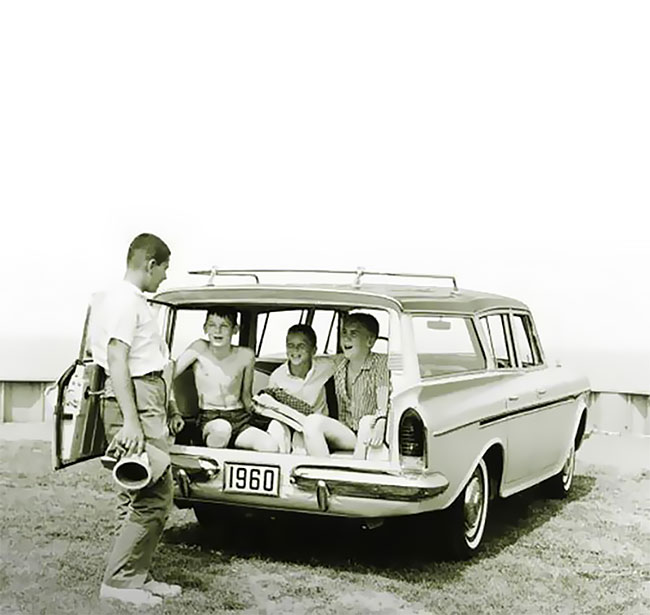


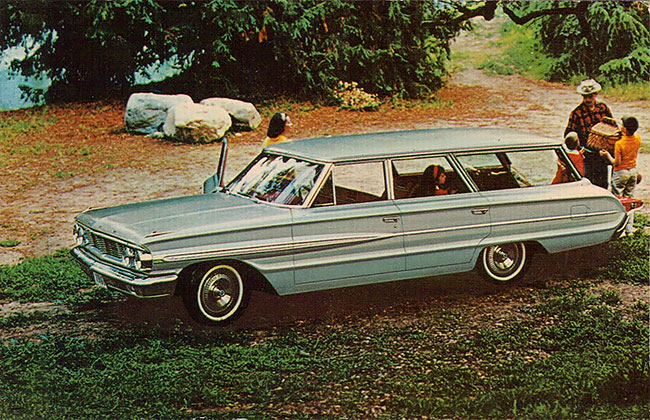


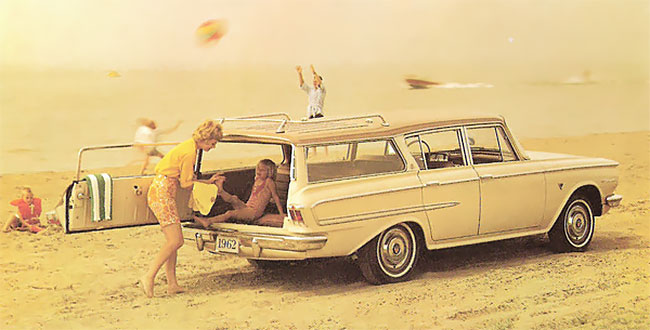



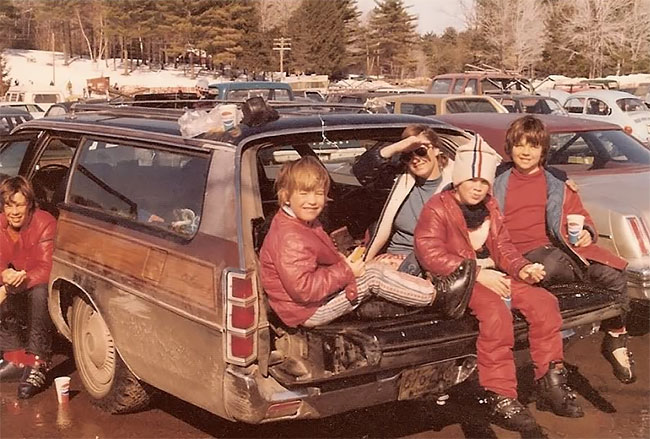















In case you haven’t been able to hear under all the media thunder of doomsday prophesying by so-called “experts” on China’s future economic performance (which has been going on for close to a decade and is more akin to wishful thinking than economic analysis), Japan’s economy does not require a prophet or crystal ball to tell you what lies ahead in its very near future: that is, that Japan has become the ticking time bomb for the world economy.
According to NIKKEI Asia, in an October report, Japan’s “yen weakened past 150 against the dollar reaching a new 32-year low as the policy gap widens between the Bank of Japan and the U.S. Federal Reserve…The Fed has repeatedly raised interest rates to tackle inflation, while the Bank of Japan maintains its ultraloose monetary policy to support the economy.
The Fed’s hawkish monetary policy, along with persistent inflation expectations, has pushed the benchmark 10-year U.S. Treasury yield up to 4%. The Bank of Japan, meanwhile, is continuing to hold the 10-year Japanese government bond yield near zero. The Japanese central bank conducted a bond-buying operation for the second straight day to keep the yield within its implicit range of -0.25% to 0.25%.
The yield gap is prompting investors to invest in dollars rather than yen, exerting strong downward pressure on the Japanese currency.” [emphasis added]
In response to this the Bank of Japan (BOJ) decided to maintain its “ultraloose monetary policy” as BOJ Governor Haruhiko Kuroda “highlighted downside risks to the economy and indicated his willingness to accept a weaker yen.” By mid-November it was reported that the Japanese economy shrank for the first time in four quarters as inflation and the weak yen hit the country. “Japan has a history of having suffered from extreme yen strength,” Kuroda added, suggesting that excessive weakness is easier to bear than a too-muscular currency.
By mid-November, NIKKEI Asia reported “Bank of Japan’s ultreasy policy under pressure as inflation hits 40-year high,” with food prices increasing by 3.6% on the year in October, well above the 2% target. Governor of the BOJ, Kuroda responded “The bank will continue with monetary easing, aiming to firmly support Japan’s economy and thereby achieve the price stability target of 2% in a sustainable and stable manner, accompanied by wage increases.”
By mid-January Japan had reported a record low in annual trade deficit of $155 billion USD for 2022.

This is not a sudden outcome for Japan’s economy but rather has been a slow burn over a 12 year period. Alex Krainer writes: “Over the ensuing 12 years and several rounds of ever greater QE [quantitative easing], the imbalances have only worsened and in February last year, the BOJ was forced to go full Mario Draghi, all-that-it-takes, committing to buy unlimited amounts of JGB’s [Japanese Government Bonds]. At the same time however, the BOJ capped the interest rates on 10-year JGBs at 0.25% to avoid inflating the domestic borrowing costs…Well, if you conjure unlimited amounts of currency to monetize runaway government debt, and you keep the interest rates suppressed below market levels, you are certain to blow up the currency.”
Not unrelated to this unfolding of Japan’s economy was the meeting of the Trilateral Commission in Tokyo, Japan for their 50th anniversary this past November.
For those who are unaware, the Trilateral Commission was founded in the wake of the Watergate and oil crisis of 1973. It was formed under the pretense of addressing the “crisis of democracy” and calling for a reshaping of political systems in order to form a more “stable” international order and “cooperative” relations among regions.
Alex Krainer writes:
“The commission was co-founded in July of 1973 by David Rockefeller, Zbigniew Brzezinski and a group of American, European and Japanese bankers, public officials and academics including Alan Greenspan and Paul Volcker. It was set up to foster close cooperation among nations that constituted the three-block architecture of today’s western empire. That ‘close cooperation’ was intended as the very foundation of the empire’s ‘three block agenda,’ as formulated by the stewards of the undead British Empire.”
Its formation would be organised by Britain’s hand in America, the Council on Foreign Relations, (aka: the offspring of the Royal Institute for International Affairs, the leading think tank for the British Crown).
Project Democracy would originate out of a Trilateral Commission meeting on May 31st, 1975 in Kyoto Japan, where the Trilateral Commission’s “Task Force on the Governability of Democracies” findings were delivered. The project was overseen by Trilateral Commission Director Zbigniew Brzezinski and its members James Schlesinger (former CIA Director) and Samuel P. Huntington.
It would mark the beginning of the end, introducing the policy, or more aptly “ideology”, for the need to instigate a “controlled disintegration of society.”
However, it appears certain participants of this Trilateral Commission are starting to catch on that this alliance between the United States, Western Europe and Japan for the restructuring of regions (à la League of Nations) is not what they so naively thought it would be, that is, that it would not be just about the disintegration of competing economies but would include their very own.
In the end, all would be expected to bend the knee in subservience to the head of a new world empire. As one of the attendees of this latest Trilateral meeting joked “some…say that all the significant events in the world have been predetermined by the Trilateral Commission,” he said to laughter from the veteran attendees, however, “we don’t know who’s in, what they are saying!”
Interestingly, three reporters from NIKKEI Asia were invited to observe this 50th anniversary gathering of the Trilateral Commission, the first time that press has been allowed entry into the notoriously secretive meetings. The meeting began with Rahm Emanuel, the U.S. Ambassador to Japan, delivering his remarks in a speech titled, “Democracy vs. Autocracy: You are going to see 2022 as an Inflection Point in the Success of Democracy.”
Interestingly, it seems that the Asian delegates weren’t too impressed.
NIKKEI Asia reported: “…the press has been invited to highlight a rift that may be emerging between Asia and the other wings of the organization. ‘We feel that the U.S. policy toward Asia, especially toward China, has been narrow-minded and unyielding. We want the people in the U.S. to recognize the various Asian perspectives,’ said Masahisa Ikeda, an executive committee member of the Trilateral Commission. Ikeda has been named the next director of the Asia Pacific Group [of the Trilateral Commission], and is scheduled to assume the position next spring.
…A new sentiment has now emerged from the Asia Pacific Group: Without proper steering, the U.S.-China rivalry may lead the world into a dangerous confrontation.” [emphasis added]
The U.S. Ambassador to Japan, Rahm Emanuel was quoted as saying while democracy is “sloppy” and “messy,” “the institutions of the democratic process, the political stability of the United States, NATO, the European countries, have held.”
However, there were many attendees who disagreed with Emanuel’s pro-U.S., pro-NATO, anti-China stance. “What is the ambassador saying?” a former Japanese official said on background. “We must engage China. If we force countries to choose sides, the Southeast Asian nations will choose China. The key is to not force them to choose,” he said.
“I feel very much embarrassed and disappointed to see the complete void of Chinese participation in this meeting,” said a former Japanese financial official. A veteran member from the Philippines agreed, saying there is no point talking about Asia without the participation of the region’s largest country and expressed concern about dividing the world into two camps. “When two elephants fight, the ants get trampled. And we’re feeling it. When two elephants fight to the death, we will all be dead. And the question is: What for?” [emphasis added]
A South Korean professor told Emanuel in the Q&A period that there are concerns in Asia about the zero-sum thinking in U.S. foreign policy toward China. “We have to develop some deliverable strategy to persuade and engage un-like-minded countries as well.”
NIKKEI Asia also reported “There were also members who noted how the liberal international order that Washington advocates is different from the original liberal order that was formed after World War II. ‘The original order, led by the U.S., sought a multifaceted extensive international system based on multilateral institutions and free trade among the democratic bloc,’ a South Korean academic said. The Six Party Talks on North Korea’s nuclear weapons was one such example of the original order, the academic said, noting that the U.S., China and Russia were all at the table.” [emphasis added]
The NIKKEI Asia report ended with a veteran of the Trilateral Commission – a former Philippine cabinet minister – who stated “Just in the past week, we edged toward a nuclear confrontation,” referring to the missile blast in Poland, that was initially suspected to be a Russian-made missile, but was more likely a Ukrainian air-defense missile that landed in NATO territory ‘by mistake.’ “And we edged toward that because of the type of zero sum games that us elders are playing. Is this what you want for your future? You don’t want a situation in the future where everybody’s edging toward the cliff and being macho about it without realizing that this is a zero-sum game that could wipe out the planet. It is beyond climate change,” the veteran said.
Japan’s “Shock Therapy” as a Response to the “Crisis of Democracy”
The Trilateral Commission is a non-governmental body, its members include elected and non-elected officials scattered throughout the world, ironically coming together to discuss how to address the “crisis of democracy” in the most undemocratic process possible. It is an organisation meant to uphold the “interests” of its members, regardless of who the people voted into political office.
On Nov 9th, 1978, Trilateral Commission member Paul Volcker (Federal Reserve Chairman from 1979-1987) would affirm at a lecture delivered at Warwick University in England: “A controlled disintegration in the world economy is a legitimate object for the 1980s.” This is also the ideology that has shaped Milton Friedman’s “Shock Therapy”. By the time of Jimmy Carter’s Administration, the majority of the government was being run by members of the Trilateral Commission.
In 1975 the CFR launched a public study of global policy titled the 1980’s Project. The general theme was “controlled disintegration” of the world economy, and the report did not attempt to hide the famine, social chaos, and death its policy would bring upon most of the world’s population.
The study explained that the world financial and economic system needed a complete overhaul according to which key sectors such as energy, credit allocation and food would be placed under the direction of a single global administration. The objective of this reorganization would be the replacement of sovereign nation states (using the League of Nations model).
This is precisely and demonstrably what has occurred to Japan’s economy over the past four decades, as showcased in the Princes of Yen documentary based off of Richard Werner’s book by the same title. As Werner demonstrates, Japan’s economy was purposefully put through multiple economic crises throughout the 80s and 90s in order to push through massive structural reform despite their economy having been one of the world’s top performing before foreign tampering.
As Werner insightfully remarked, the best way to have a crisis is to manufacture a bubble, that way, nobody will stop you.
To understand the incredible significance of this, we will need a quick review of what occurred to Japan’s economy over a 40-year period.
Japan’s Offering to the Gods on the Altar of “Free Trade”
By the 1980s, Japan was the second biggest economy in the world next to the United States and was a leader in the manufacturing of consumer technology products to the West, including the United States. Due to Japan’s investment in automation tools and processes, Japan was able to produce products faster and cheaper than the United States that were also superior in quality.
One of the examples of this was competition between the two in the memory chip DRAM market. In 1985, there was a recession in the United States in the computer market, resulting in the biggest crash in over ten years for Intel. Complaints from certain quarters in the United States began criticizing Japan for “predatory” and “unfair” trade practices despite the recession in 1985 being a demand problem and not a competition problem.
Long story short, President Reagan, who was supposed to be all about free markets, in the spring of 1986 forced the U.S.-Japan Semiconductor Agreement with METI (Ministry of Economy, Trade and Industry in Japan).
Part of the conditionalities of this agreement were that the American semiconductor share in the Japanese market be increased to a target of 20-30% in five years, that every Japanese firm stop its “dumping” into the American market and the Americans wanted a separate monitoring body to help enforce all of this.
No surprise here, the Japanese companies refused to do this and METI had no way of forcing them to do so.
President Reagan responded by imposing a 100% tariff on $300 million worth of Japanese goods in April 1987. Combined with the 1985 Plaza Agreement which revalued the Japanese Yen the U.S.-Japan Semiconductor Agreement gave the U.S. memory market the extra boost it needed. (for more details on story of how the U.S. tampered with the Japanese semiconductor market refer here).
The Plaza Accord was signed in 1985 by Japan, Germany, France, Britain and the United States. The agreement depreciated the United States Dollar against the Japanese Yen and the German Deustche Mark in an effort to improve the competitiveness of American exports. How very “free market”!!! (Refer here for the story of De Gaulle and Adenauer’s attempt to form the European Monetary System which was sabotaged by Anglo-America). Over the next two years after the signing of the Plaza Accord, the dollar lost 51% of its value against the yen. Japan entered the Plaza Accord to avoid having its goods tariffed and locked out of the American market.
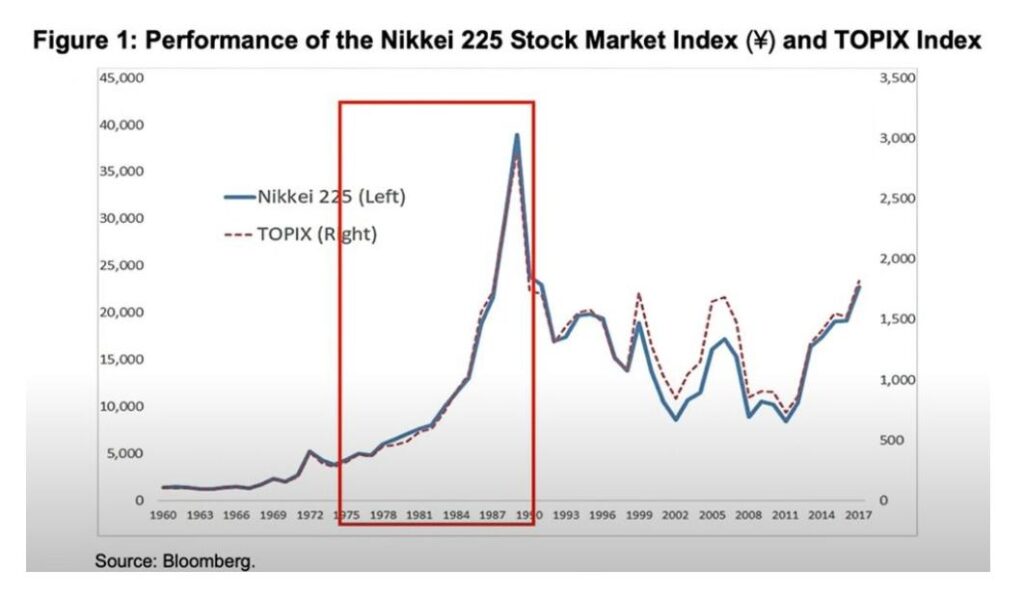
The Yen’s appreciation plunged the Japanese manufacturing sector into recession. In response to this, the Bank of Japan loosened monetary lending policies and lowered interest rates. This cheap money was supposed to be funneled into productive efforts. Instead, it went into stocks, real estate, and asset speculation. This is when Japanese real estate and stocks reached their peak price level.
Between 1985 and 1989, stocks rose in Japan by 240% and land prices by 245%. By the end of the 80s the value of the garden surrounding the Imperial Palace in central Tokyo was worth as much as the entire state of California.
Although Japan is only 1/26th of the size of the United States its land was valued at four times greater. The market value of a single one of Tokyo’s 23 districts, the Central Chiyoda Ward exceeded the value of the whole of Canada.
With asset and stock prices rising inexorably even traditional manufacturers could not resist the temptation to try their hand at playing the markets. Soon they expanded their finance and treasury divisions to handle the speculation themselves. The frenzy reached such proportions that many leading manufacturers, such as the car maker Nissan, made more money through speculative investments than through manufacturing cars.
The Princes of Yen documentary explains: “Many credited the boom in Japan’s economy to high and rising productivity. In reality, Japan’s stellar performance in the 1980s had little to do with management techniques. Instead of being used to limit and direct credit, window guidance was used to create a giant bubble. It was the Bank of Japan who had forced the banks to increasing their lending by so much. The Bank of Japan knew that the only way for banks to fulfill their loan quotas was for them to expand non-productive lending.”
Between 1986 and 1989, Toshihiko Fukui was the head of the Banking Department at the Bank of Japan and would later become the 29th Governor of the Bank of Japan. This was the department that was responsible for the window guidance quotas.
When Fukui was asked by a journalist “Borrowing is expanding fast, don’t you have any intention of closing the tap of bank loans?” Fukui replied “Because the consistent policy of monetary easing continues, quantity control of bank loans would imply a self-contradiction. Therefore, we do not intend to implement quantitative tightening. With structural adjustment of the economy going on for quite a long period, the international imbalances are being addressed. The monetary policy supports this, thus we have the responsibility to continue the monetary easing policy as long as possible. Therefore, it is natural for bank loans to expand.”
In Japan, total private sector land wealth rose from 14.2 trillion yen in 1969, to 2000 trillion yen in 1989.
The Princes of Yen documentary reported: “At his first press conference as the 26th governor of the Bank of Japan, in 1989, Yasushi Mieno said that ‘Since the previous policy of monetary easing had caused the land price rise problems, real estate-related lending would now be restricted.’ Mieno was hailed as a hero in the press to put a stop to this silly monetary policy that was responsible for the increasing gap between the rich and the poor. However, Mieno was deputy governor [of the Bank of Japan] during the bubble era, and he was in charge of creating the bubble.
All of a sudden land and asset prices stop rising. In 1990 alone, the stock market dropped by 32%. Then in July 1991, window guidance was abolished. As banks realised that the majority of the 99 trillion yen in bubble loans were likely to turn sour, they became so fearful that they not only stopped lending to speculators, but also restricted loans to everyone else. More than 5 million Japanese lost their jobs and did not find employment elsewhere. Suicide became the leading cause of death for men between the ages of 20 and 44.
Between 1990 and 2003, 212,000 companies went bankrupt. In the same period, the stock market dropped by 80%. Land prices in the major cities fell by up to 84%. Meanwhile, the Governor of the Bank of Japan, Yasushi Mieno, said that ‘Thanks to this recession, everyone is becoming conscious of the need to implement economic transformation’.”
Between 1992 and 2002, ten stimulation packages worth 146 trillion yen were issued. The thought was domestic demand had to be boosted by government spending and then loan demand would also rise. For a decade the government executed this approach, boosting government debt to historic levels.
Richard Werner remarked “The government was spending with the right hand, putting money into the economy, but the fundraising was done through the bond market, and therefore it took the same money out of the economy with the left hand. There was no increase in total purchasing power, and that’s why the government spending couldn’t have an impact.”
By 2011, Japan’s government debt would reach 230% of GDP, the highest in the world. The Ministry of Finance was running out of options. Observers began to blame the Ministry of Finance (despite the clear sabotage by the Bank of Japan’s actions) for the recession, and started to listen to the voices that argued that the recession was due to Japan’s economic system.
In Japan, the authorities and the Bank of Japan argued, as did the Western powers almost two decades later, that the taxpayer should foot the bill. However, taxpayers have not been responsible for the banks problems, therefore, such policies have created a moral hazard (a moral hazard is a situation where an economic actor has an incentive to increase its exposure to risk because it does not bear the full costs of that risk).
According to the Princes of Yen documentary, Finance Minister Masajuro Shiokawa had turned to the Bank of Japan asking it to help stop deflation, or fight deflation at least. The Bank of Japan consistently defied calls by the government, by the Finance Minister and the Prime Minister of Japan, to create more money to stimulate the economy and end the long recession. At times the Bank of Japan even actively reduced the amount of money circulating in the economy, which worsened the recession. The Bank of Japan’s arguments always came to the same conclusion, namely that the blame lay in Japan’s economic structure.
It should also be noted that a whole generation of Japan’s economists were sent to the United States to receive PhDs and MBAs in U.S. style economics. Since neoclassical economics assumes that there is only one type of economic system, namely, unmitigated free markets, where shareholders and central bankers rule supreme, many Japanese economists quickly came to regurgitate the arguments of U.S. economists.
By the late 1990s, Japan’s economy was heading for the rocks. Ira Shapiro who worked as a U.S. ‘negotiator’ of U.S.-Japan talks during this period stated “Primary sector deregulation is needed to overcome the entrenched interests of large insurance companies, life and non-life, and the Ministry of Finance bureaucracy.”
On Shapiro’s Federalist Society biography page, he is described as playing “a central role in the negotiation and legislative approval of the North American Free Trade Agreement (NAFTA) and the multilateral Uruguay Round that created the World Trade Organization and the current trade rules.”
These U.S.-Japan talks needed to reach an agreement by a deadline decided by the United States. If no agreement were met after the declared deadline, then the U.S. had threatened to impose trade sanctions.
Richard Werner clarified what would be the consequences of Shapiro’s demands to the Japanese; that securitisation of the real estate was being pushed however, in order to have meaningful securitisation we need deregulation, and to get deregulation you have to reduce the power of the Ministry of Finance. This in turn would allow the Bank of Japan, who was under the purview of the Ministry of Finance, to gain power.
From the mid 1990s onwards the Government began to dismantle much of the power structure of the Ministry of Finance. The Bank of Japan, on the other hand, saw its influence grow significantly. The Bank of Japan was cut loose from the Ministry of Finance pretty much making it independent.
Soon after his retirement from the position of governor of the Bank of Japan in 1994, Mieno embarked on a campaign, giving speeches to various associations and interest groups. He lobbied for a change in the Bank of Japan law. His line of argument was to subtly suggest that the Ministry of Finance had pushed the Bank of Japan into the wrong policies. To avoid such problems in the future, the Bank of Japan had to be given full legal independence.
In 1998 monetary policy was put into the hands of the newly independent Bank of Japan.
In early 2001, a new type of politician was swept into power. Junichiro Koizumi became the Prime Minister of Japan. In terms of his popularity and his policies he is often compared to Margaret Thatcher and Ronald Reagan. His message was simply: no recovery without structural reform.
Princes of Yen remarked: “During 2001, the message of no economic growth without structural reform had been broadcast on an almost daily basis on the nation’s TV screens. Japan was shifting its economic system to a U.S. style market economy, and that also meant that the centre of the economy was being moved from banks to stock markets. To entice depositors to pull their money out of banks and into the risky stock market, reformers withdrew the guarantee on all bank deposits, while creating tax incentives for stock investments.
As U.S. style shareholder capitalism spread, unemployment rose significantly, income and wealth disparities rose, as did suicides and incidents of violent crime. Then, in 2002, the Bank of Japan strengthened its efforts to worsen bank balance sheets and force banks to foreclose on their borrowers…Heizo Takenaka [the new Minister for Financial Services] was supportive of the Bank of Japan’s plan to increase foreclosures of borrowers…Takuro Morinaga, a well-known economist in Tokyo, argued forcefully that the Bank of Japan inspired proposal by Takenaka would not have many indigenous beneficiaries, but instead would mainly benefit U.S. vulture funds specialising in the purchase of distressed assets…[When Toshihiko] Fukui’s support for the bankruptcy plan was voiced… [he] was an adviser of the Wall Street investment firm Goldman Sachs, one of the largest operators of vulture funds in the world.”
Richard Werner remarked: “Mr. [Toshihiko] Fukui [29th Governor of the Bank of Japan], and also his mentor Mr. [Yasushi] Mieno [26th Governor of the Bank of Japan], and his mentor Mr. [Haruo] Maekawa [24th Governor of the Bank of Japan], and you’ve guessed it, these are some of the Princes of the Yen that the book is all about. They have said on the record in the 80s and the 90s, ‘What is the goal of monetary policy? It is to change the economic structure.’ Now how do you do that? Well, you need a crisis. They made a crisis in order to change the economic structure.”
The department responsible for the window guidance quotas at the Bank of Japan, was called the Banking Department. The man at the head of this from ‘1986 to ’1989, was Toshihiko Fukui. Mr. Fukui thus directly helped create the bubble. When Fukui had become governor of the Bank of Japan, he would say “While destroying the high-growth model, I am building a model that suits the new era.”
Richard Werner remarked: “They have succeeded on all counts. If you look at the list of their goals, destroy the Ministry of Finance, break it up, get an independent supervisory agency, reach independence for the Bank of Japan itself by changing the Bank of Japan law, and engineer deep structural changes in the economy, by shifting from manufacturing to services, opening up, deregulating, liberalising, privatising, the whole lot.”
What’s it like to be rich and then go broke?
One of the worst things that can happen and one of the best things that can happen.
Lost multi-millions in saved wealth, a beachfront house, and a business generating mid six figures every year after the GFC.
Like others have said it was the darkest days of my life, not only for the tangible loss, but the loss in all faith in people, government oversight, justice and the way society functions in general. My losses were due to fraudulent business people within publicly listed investment companies, and after it all washed out, billions were lost of mine and others money and only one person went to jail, which really mattered for nothing as none of us got our money back. Also in hindsight it became clear that the supposed oversight created to protect us investors was actually the secret portal for the investment managers to have carte blanche to do whatever they wanted with investors money, including personally paying themselves and leveraging to unrealistic levels to generate more fees.
The first reaction is failure and anger, then fear as you realize how hard it will be to ever get back to where you were, then fear to even survive kicks in as saving dwindle, no new prospects of work, and then debts start to add up and minor bills start falling late as you begin to try to balance the small money you have like a circus juggler. When the debt collectors start calling and showing up it brings out the worst of the worst in life and you realize that your life has absolutely no value, is really only worth the $800 for that phone bill, or the $600 car payment and the people chasing you for this money would not care if you were dead or alive as long as they get their small collection fee. You also realize how cruel the world of money is, and how the late fees and interest are 30%/40%/50% and it throws you into disaster zone so quick.
The positive thing is I developed an incredible empathy for those who struggle a feeling I would not really consider when everything was going well. Our society values the rights of a $100 creditor over the life of a citizen, and literally it feels that any person who for whatever reason cannot pay a bill, is the scum of the earth.
I learned that our society has a very, very unhealthy value and emphasis on money.
It has taken many years to try to get back on my feet and I still suffer from fear and anxiety, probably similar to a depression era survivor. I am not sure if I will ever catch up but I am trying and fighting everyday. This is something that is hard, as it is almost impossible to relax and enjoy as it seems every action and decision is life or death.
I have to work so much harder and smarter now which has helped me to acquire new skills and hone my existing skills. I realize now that despite being in a low position wealth wise, I am so much more skilled and knowledgeable than many of my peers who are getting paid salaries 1000% higher than I am making, and I hope and trust that one day this will come to serve me well, as long as I keep at it.
Probably the hardest impact of the financial loss is how it impacted loved ones, my spouse and children. To go from having it all to not, and not really understanding how it happened and not being in control of changing things was a huge burden on me, and many times led me to think life for them would be much better without me. However I also thought I can be the solution, and what a great lesson that would be to overcome adversity and to succeed against all odds. This is one of my current drivers.
The benefit (I think & hope) is that my young adult children will have a much better understanding of the value of things, and what is really important, and not get sucked into the materialistic world that is so easy to fall into when life is easy and money is around. Hard work is valuable and the results and benefits from that hard work is much more enjoyable and lasting than easy money or daddy’s money.
Another benefit is that my wife and I now work together in our business, so she has grown in ways she never would have and discovered skills and abilities that has made her feel much better about herself and equipped her to be more helpful and supportive to our children and others. We also respect each other and understand each other so much better, and also know we have weathered a storm that would destroy most marriages, and have a solid foundation to take with us for the rest of our lives.
The world is corrupt and I am pretty sure it always will be, and most people are only looking out for their own interest, but by being aware of this, and not expecting anything different gives a person more control over their life and allows them to make choices in line with what really matters the most to them.
I would not wish this loss on anyone as it is as dark as dark can be, but I also think that the lessons learned from it are ultimately worth more that the loss itself.
Would I like my money back….sure….but only with the life experiences I have gained along the way. I see friends with so much money, their pocket change could dramatically improve my situation, but they have nothing, and I know they never will, as they are so blind to so much about the reality and values of life.
John Thomson’s Remarkable Photographs of China from the 1870s

John Thomson (1837-1921) created work that was ground-breaking and pioneering. Far more pioneering than an innovative coiffure or a teen’s product placement on YouTube.
Thomson was an Edinburgh-born photographer who travelled to China in the late 1860s. From 1870-71, Thomson travelled extensively in China photographing the people he met, documenting their customs, lives, costumes, and traditions. Thomson feared much of China’s culture would be swamped by the expansion of Empire and the opening of trading routes.

Thomson travelled with a camera the size of a large packing crate. He used the collodion process or wet plate process which was a time-consuming and difficult. Thomson hoped his work would bring an appreciation of the rich diversity of ethnicity and culture to Victorian Britain. That he succeeded and his works are still held in high esteem today is testament to Thomson’s pioneering work as a photographer.



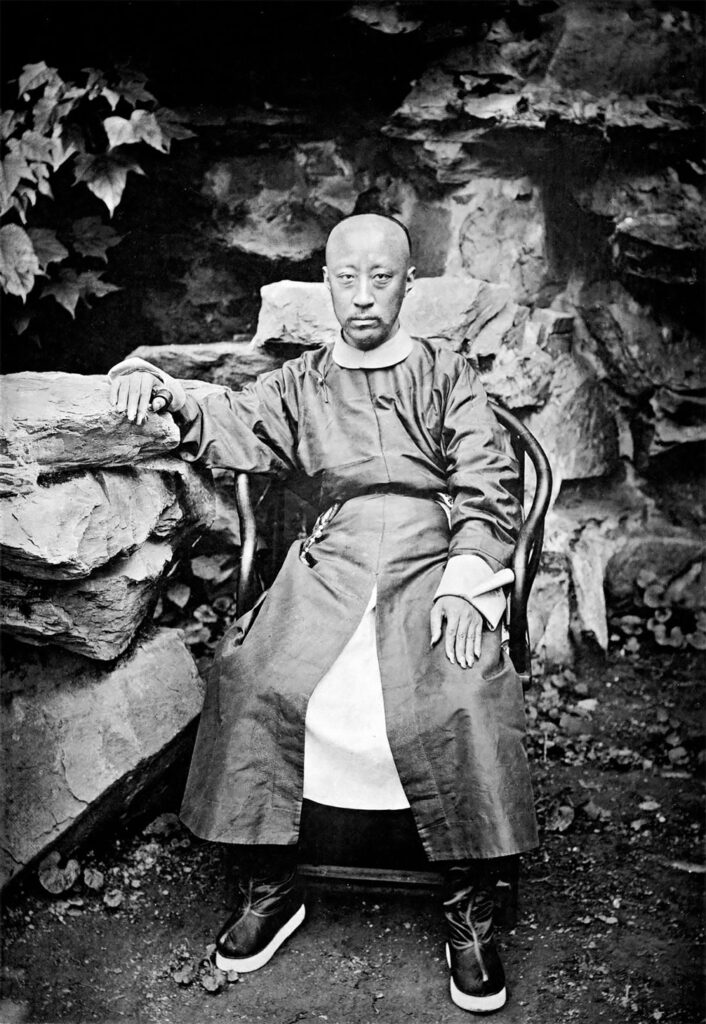






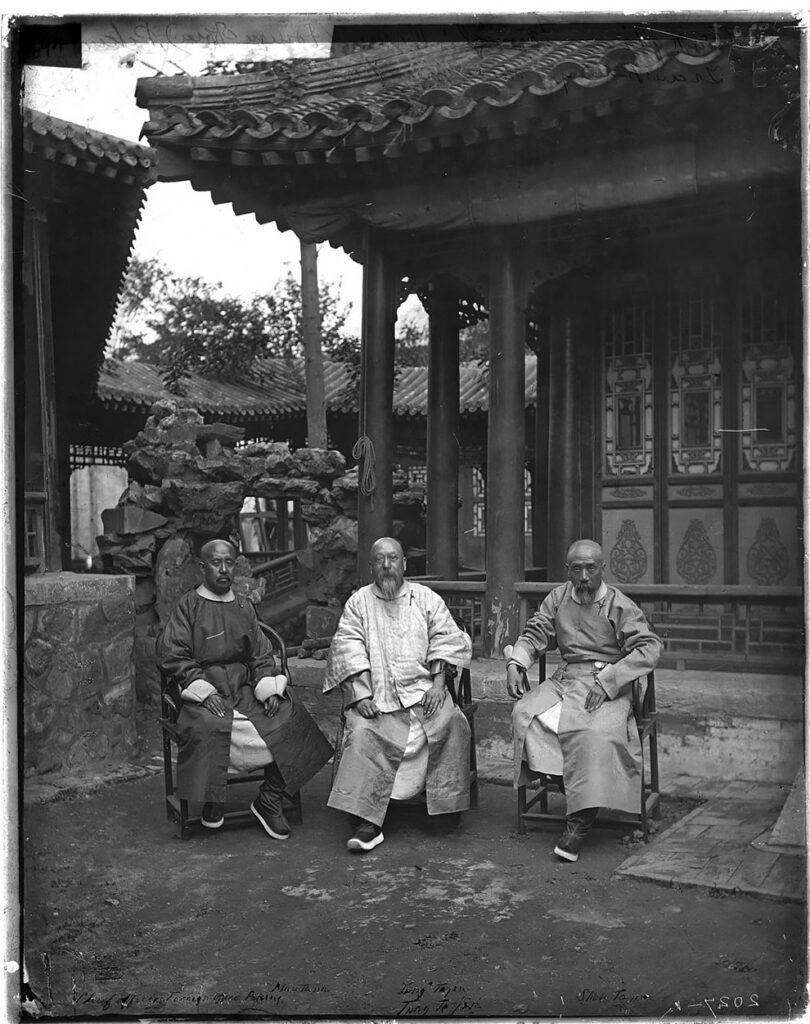




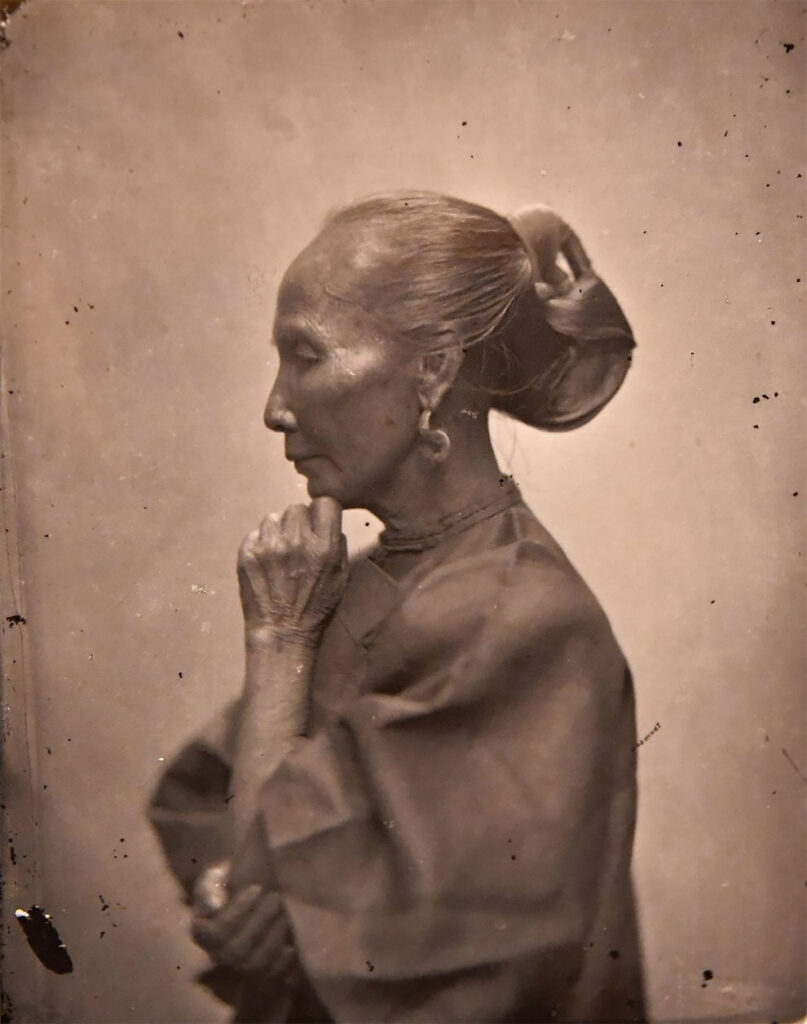


What is life like in modern day Mongolia?
- Those “Mongolian BBQ” places you see all around town is pure bullshit. Our ancestors didnt eat stuff like that, and we sure as hell dont eat that except at our own “Thai” or “Chinese” restaurants. Our food (traditionally) consists of mostly meat, mostly from lamb or beer, with lamb being extremely common. We usually boil these and either eat em with veggies, or make it into nice soup. We also eat food called “Buuz”, which looks similar to a dumpling, except bigger in size. Edibles (no 420 sorry) and drinkables made of dairy is also common. Things like yoghurt, dried curds, milk tea and kumis. Kumis is a sour milk-like drink made by fermenting a mare’s milk. The people love to drink it, especially when going to the countryside. There are some cases of much of it causing people to get tipsy due to the fermentation. Good shit. But that’s the traditional stuff, an average regular Joe living in the city wouldnt eat those stuff all the time. People mostly cook food with rice, meat, veggies etc. You know the standard stuff. We also have many famous restaurants and eateries here like most other countries. KFC, Burger king, Pizza Hut are all here. However for some, these restaurants are considered a delicacy where they only go once in a while.
- While traditional sports such as wrestling, bow and arrow, horse racing are common especially during national holidays, the global sports are what the most youth is all about. Soccer and basketball are extremely popular. Baseball and hockey not so much. Whenever theres an open space somewhere, you can be sure that some kids will kick some balls there. However our national teams suck in terms of team sports. Maybe the notion that we were once fierce and arrogant horselords who dont take shit from nobody is still in our DNA and takes its toll during team plays? Who knows. Individual sports however, have brought quite a few joys to the nation. In many big events such as the Olympics, Mongolians do well every once in a while, bringing home gold, silver, bronze and all of them are celebrated proudly. I do hope I live to see the day that my country plays in a world cup, or atleast an Asian Cup or something.
- Although it is true we were quite ferocious in battles during the 13th century and upwards, we werent always the bad guys the western media makes our ancestors to be. Genghis Khan was one of the first men to tolerate religious freedom, allowing people to worship whatever they like as long as they paid tribute to the Mongol Empire. The Mongol Empire also had laws against looting, raping, murder, fraud, etc. It was a well established empire that had its own strict rules and boundaries. Our recent history however is filled with revolutions and struggles. Things such as 200 years of Manchurian dominance in Mongolia and the religious violence have really set our country back. The entire history of Mongolia is very rich, long and complex, nevertheless very interesting. However I cant write it all here nor do I know the entire history.
- Think the word “Mongolia”. What comes into your head? If the answer is people living in rural huts, riding horses, herding sheep and being nomadic, then you would be right. However, that part of Mongolia is quickly fading away. Our whole population is at only 3,081,600. That is around 1/3 of the population of New York City alone. With 1.31 million in the capital city, almost half of the country’s population (46%) lives in an urban environment. Completely toying with the notion that all Mongolians are barbarians riding horses and plowing women. The city life is quickly developing as more and more people seek refuge in the city rather than the harsh and blistering winter winds in the countryside.
- However, the capital city, Ulaanbaatar, is originally designed to withhold only over 500,000 people. Now crammed with more than a million, much of the people live in the traditional nomadic “Ger”, but instead of in the countryside, far from eachother, they are cramped up together in what we call a “Ger district”. These district are proving to be a huge problem as the air pollution tightens. The country is ranked #6 with most air pollution as of 2017. And this winter things only got worse. In fact, its gotten so worse that our youth finally decided to take action, pleading for help and organizing various activities to make the people aware of the growing problem of air pollution. People are being told to wear masks that filter out the polluted air. There have been reports that the pollution levels are extremely harmful, much so that the polluted air is equivalent for someone to smoke a few dozen packs of cigarettes. The air quality during the wintertime is in no way healthy for any child to be living in. And the Ger Districts dont help at all. You see, Ulaanbaatar is a city built in a valley between 4 big mountains surrounding it. Making the air exchange very minimum in and out of the city. Pollution made in the city stays in the city. People living in Gers need to stay warm, and to do that, they burn wood, coal, fossil fuels, or even sometimes any types of plastic. The smoke burned from all these materials go up the chimney. Now imagine for a second, hundreds, maybe even thousands of these, all cramped up in one district. Yeah.
- Since globalization is a thing, and Mongolia is part of the world (After all, we’re between two of the greatest nations right in history), things like social media, cultural diversity, global culture are very much a thing. Everyone uses social media and are obsessed by it. Facebook, Instagram, Snapchat, Twitter are all extremely common and everyone wants to voice their opinion nowadays. Mongolian teenagers are affected by alot of aspects of western culture. Netflix is here, people like western tv shows, we watch Game of Thrones on HBO or in huge auditoriums near the central department store, the Avengers fangirling is real. Basically anything you could expect from most teenagers around the world, is the same in Mongolia.
- Speaking of socializing and teens. Clubbing and nightlife is becoming huge in Mongolia. Well, mostly Ulaanbaatar. Teenagers at the age of 14,15 are already going out, some sneaking out with their daddys BMWs. The clubs are affected by money, and will let just about anyone inside, though lately rules might have been getting more strict… It is considered “normal” in the teenage culture to have smoked cigarettes, drinking alcohol, having underage sex. Although I guess you could say the same about most countries.
- Most of the youth spend their time in PC gaming places, with most being ‘addicted’ to games like Dota, CS, PUBG. It is encouraged to play sports and spend time outdoors. However it is rare to find a place to do such activities. Sports recreational areas and parks are extremely rare. Very rare soccer fields, very small but trashed basketball courts, dusty and gravel filled open spaces are common. When there is a nice park or open space, it is often packed full of people trying to get away from their busy stressful lives.
- The city planning in Ulaanbaatar is very poor, although it is turning into a big city, filled with skyscrapers. It still lacks most basic things that make a decent city. These include proper transition systems, clean paved walkways, biking roads, proper lightning system, and most importantly, the traffic. The traffic is horrendous and the jams could get you stuck in one place for hours if you’re unlucky enough to be in it during peak hours. Many road constructions take place with the taxpayers money however ironically, these roads seem to break down every 6 months. There are buses going places in the city however no subtrain systems at all. Although to make up for it, the taxis are pretty damn cheap, and many people with a car usually does a taxi service for some easy bucks.
- We have the worlds largest Man and a Horse statue. Its that of Genghis Khan and its few dozen kilometres outside the capital. Its beautiful and certainly a place to visit if you’re in Mongolia.
- Speaking of places to visit: Mongolian countryside is the place to be rather than the city. Although some areas are affected by desertification. Our nomadic lifestyle treated the lands well and in turn, these lands blessed us with its beauty. Heres a few you could check out off the top of my head:
- Erdenezuu Monastery, in Kharkhorin city
- Terelj National Park, few KM outside the city. Mongolian version of grand canyon
- Gobi Desert
- Khorgiin Togoi & Terkhiin Tsagaan Nuur. A volcanic crater beside a huge lake. In Arkhangai region
- Altai Tavan Bogd Mountain range
- Khuvsgul Lake
- Bogd Khan Mountain
- Theres alot going down in Mongolia, and life is happening just the same as anywhere else. If you’re up for a wild adventure then definitely Mongolia is the place to be. However I shouldnt say to expect a 5 star western luxury when traveling through the countrysides. As most part is left untouched and wild. But hey, thats the beauty isnt it?
US Airmen Respond With Shock, Mockery as General Urged Service Members to Prepare for War With China
“I felt like a random email blast to thousands of airmen was an inappropriate way to direct them to essentially prepare for war with a near-peer adversary,” one Air Force officer reportedly stated. US Air Force officers are reacting with horror to a memo by a top general advising them to prepare for a conventional war against China within two years. On January 27, thousands of airmen received a communique from Gen. Mike Minihan informing them that his “gut” told him the US “will fight [China] in 2025,” and demanding they be prepared to “fire a clip into a 7-meter target with the full understanding that unrepentant lethality matters most.” “Aim for the head,” added the memo, which also included instructions to update their virtual ‘Record of Emergency Data,’ which informs the military what to do in the event of a service member’s death. A number of Air Force members were left dumbfounded by the message, including an officer who recently told Military.com that many of his subordinates could not believe what they were seeing. “Some of my airmen are going to get scared when they read this memo,” the officer reportedly said. “I felt like a random email blast to thousands of airmen was an inappropriate way to direct them to essentially prepare for war with a near-peer adversary.” The officer reportedly pointed out it was “inaccurate” to describe a magazine as a ‘clip,’ and that the insistence airmen “aim for the head” was “dramatic.” Furthermore, he noted the suggestion ran contrary to lessons taught to snipers during marksmanship, which encourage sharpshooters to aim for the center of a target’s mass. “Someone sarcastically joked, ‘Aim for the head. Spoken like a true marksman!’” the officer reportedly added. Several advisers at the Center for Strategic and International Studies, a leading US military aligned think tank, also greeted the general’s comments with dismay. “What we're effectively signaling is we have no idea, and I'm not sure we understand just how damaging that is,” said an official, who added that “having this menu option of various years… I think comes across as undermining the credibility of our statements and our assessments on precisely the relationship where your words matter.” Another reportedly added, “I think we are seemingly trying to talk ourselves into a conflict that doesn't need to occur.”
Incredible And Futuristic Bookstore-Themed Shopping Mall In China
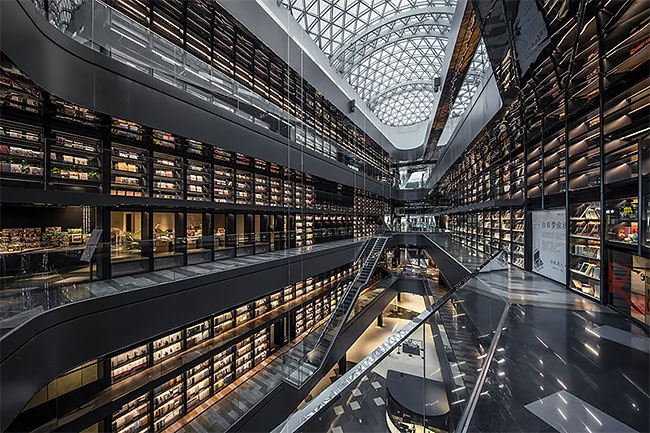
Undergoing a cultural renaissance, the city of Xi’an, China, is home to a new bookstore-themed commercial complex designed by Lafonce Maxone and intervened by Gonverge Interior Design for the interiors. The project offers a lifestyle and an educational experience with multiple business models through its ‘culture and commerce’ design strategy. The 18m-high and 240m-long artistic book walls in the building are striking and pioneering, brining a new model for urban commercial space to the city.
More: Gonverge Interior Design (ch) h/t: designboom

Based on the long, narrow site oriented in the south-north direction and the four-storey-high illuminated atrium, Gonverge Interior Design carried out project orientation planning as well as commercial and spatial design by appealing to all the senses.





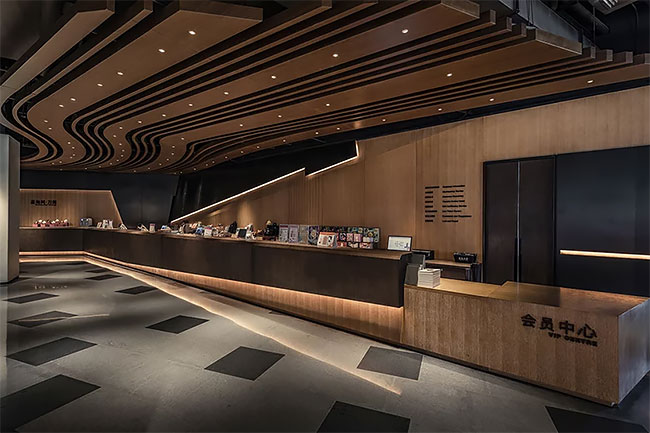

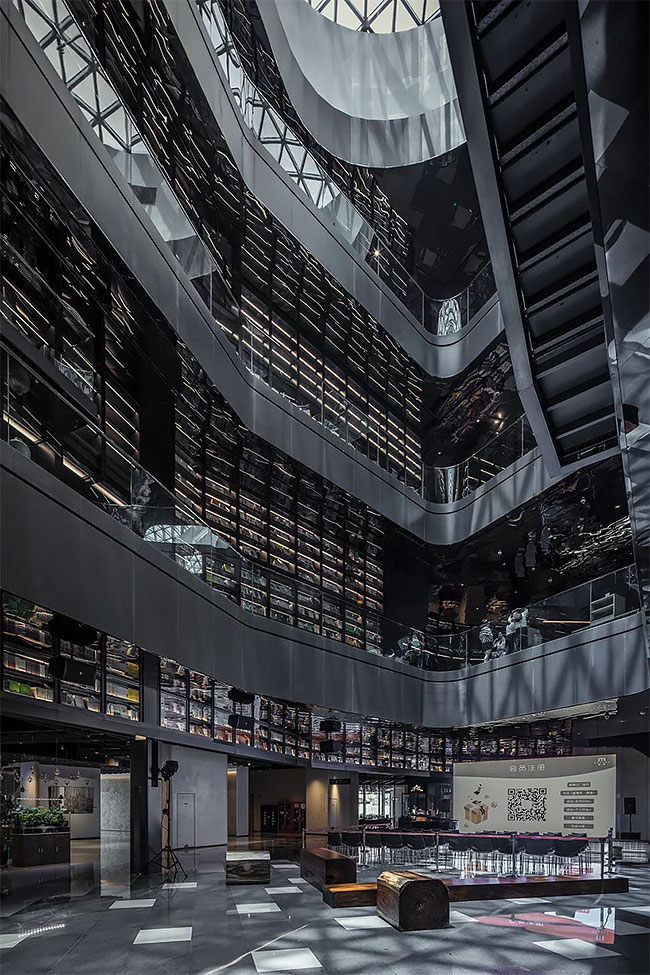
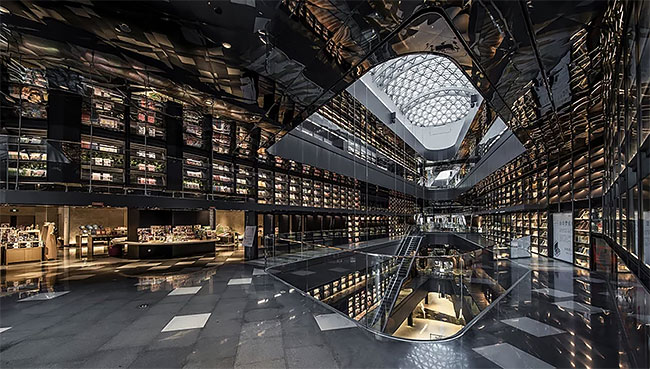
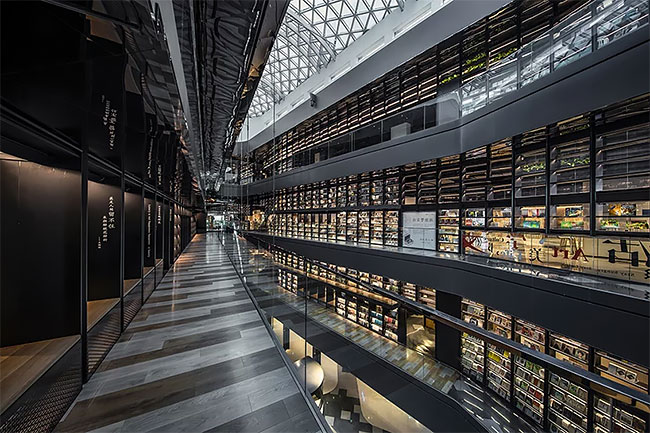
Thailand to ban Pfizer after the Thai Princesses falls into a coma immediately after a booster jab
From HERE
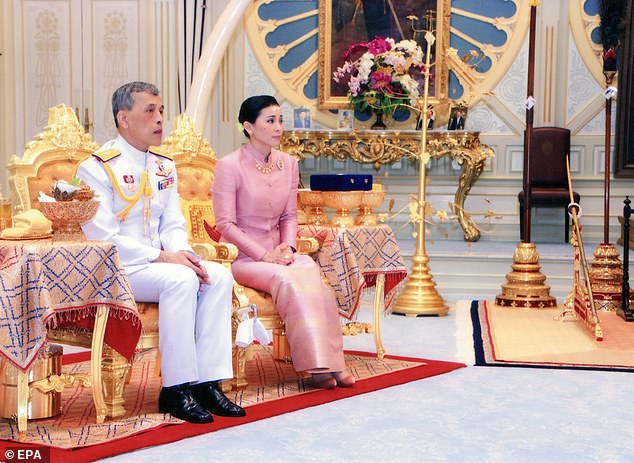
Just days after receiving her covid booster jab, the daughter of the king of Thailand collapsed and fell into a coma.
Princess Bajrakitiyabha, who is the potential heir to the Thai throne, is in a grave condition weeks after she collapsed.
Some reports suggest she had suffered a heart attack though her family were told she likely suffered a bacterial infection. None the less, six weeks later and the princess is still in a coma and being kept alive by machines.
The Royal Family have now been alerted to the fact that the princess has most likely been a victim of the jab.
Top Thai authorities including advisors to the King have been in discussions with Prof. Sucharit Bhakdi and are preparing to have the Pfizer contracts declared null and void according to reports.
If this happens Thailand will become the first country to make the contract null and void, meaning that Pfizer will become responsible for all vaccine injuries.
Three point plan to avoid conflict with China
The USA is now scheduling wars like a doctor’s appointment.
Stewardess Skill Training In China

Students attend a stewardess skill training for the upcoming 2017 entrance examination for art majors in colleges in Luoyang, central China’s Henan Province. These photos portray the bizarre range of skills Chinese air hostesses require before they take to the skies.


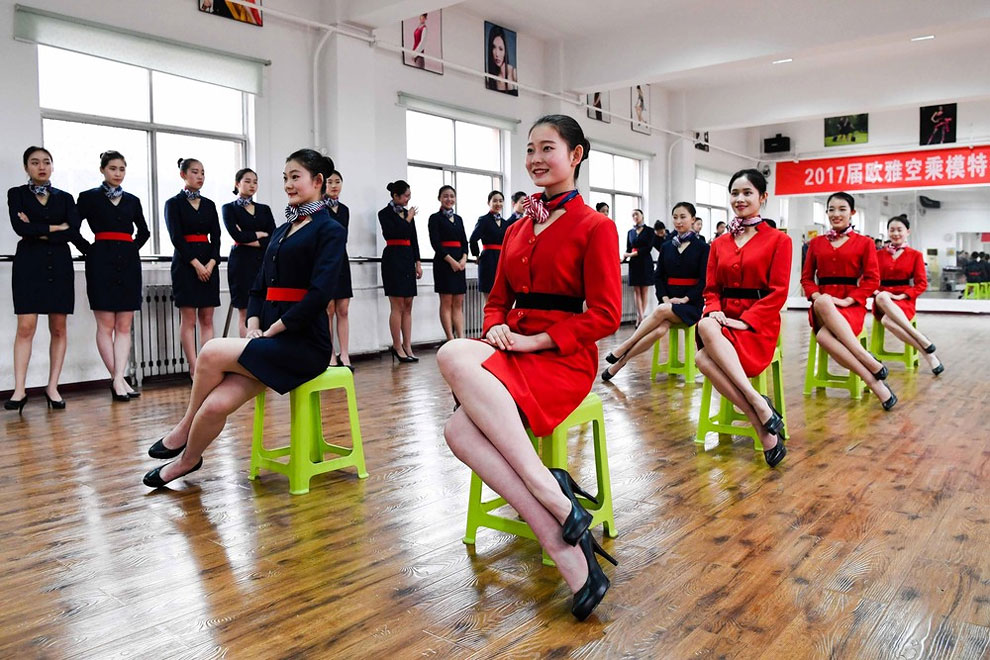
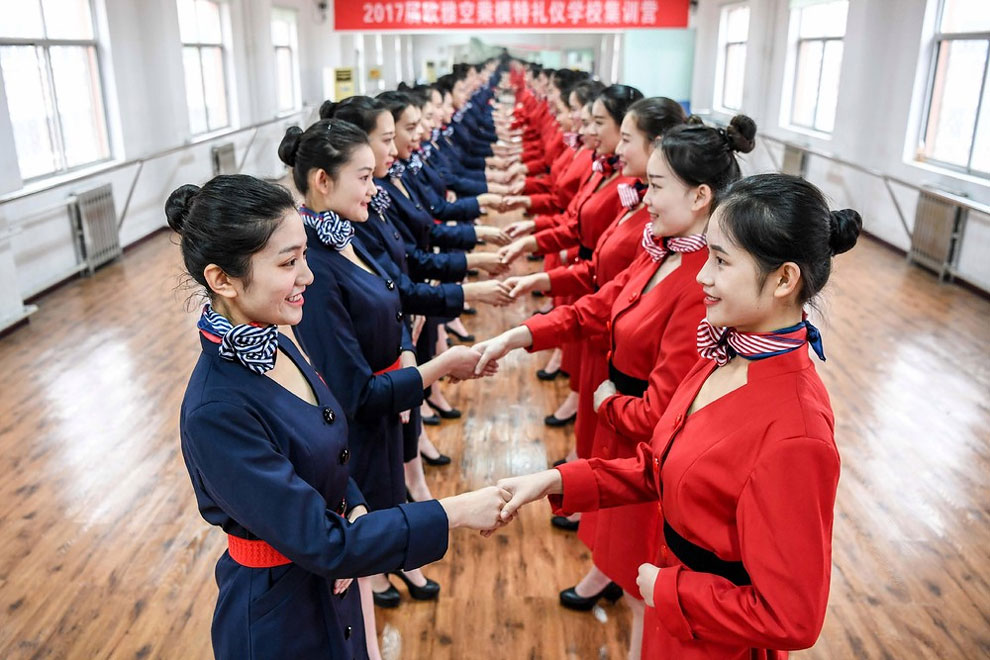



China’s hypersonic triad pressing down on US
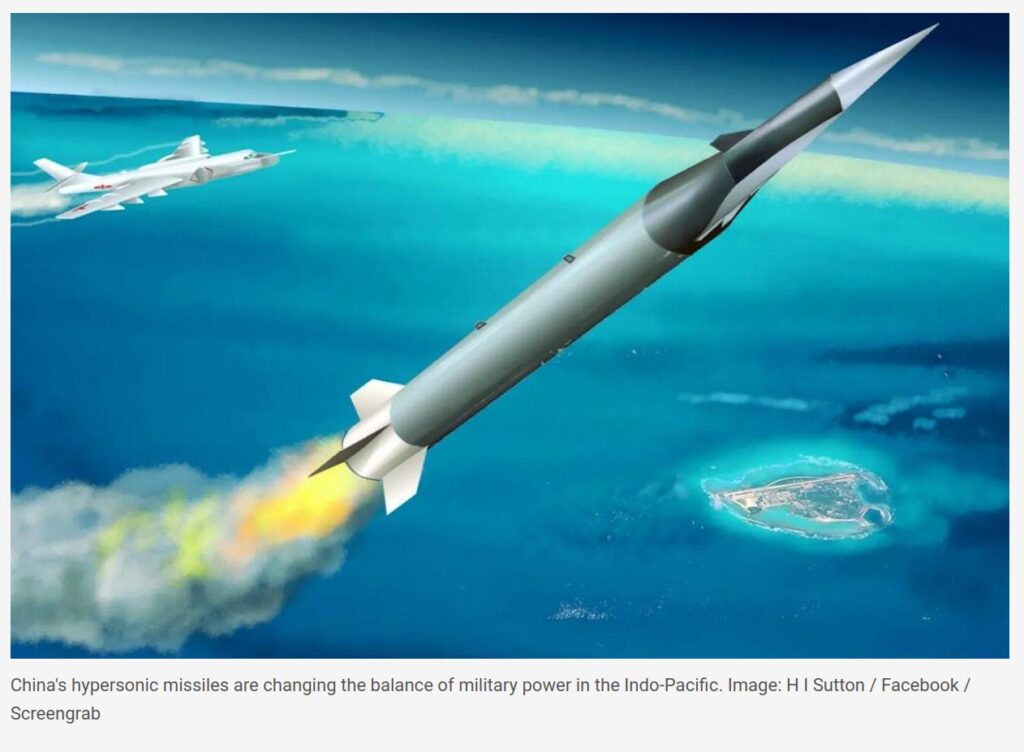
For the first time, China has revealed the specifications of its YJ-21 hypersonic anti-ship missile, which was first observed last April during a test launch from a Type 055 cruiser. Alongside air-launched and land-based hypersonic missiles, the YJ-21 signals China’s nascent hypersonic weapons triad for conventional deterrence.
This week, South China Morning Post (SCMP) reported that the People’s Liberation Army – Strategic Support Force (PLA-SSF) published an article in its official Weibo account that states the YJ-21 missile can travel at a speed of Mach 10, or 3,400 meters per second.
It also claims that any known shipboard defense system cannot intercept the missile at that speed and that even without an explosion its tremendous kinetic energy will have devastating effects on its target.
The PLA-SSF article also claims that the YJ-21’s introduction marks a significant evolution in China’s anti-access/area denial (A2/AD) capabilities, highlighting the operational flexibility and survivability advantages of a sea-based launch platform such as the Type 055 cruiser.
The PLA-SSF’s release of information on the YJ-21 may serve as a deliberate warning against the US and its allies after then-US Speaker of the House Nancy Pelosi’s controversial visit to Taiwan last August.
The unveiling of the YJ-21’s export version at last year’s Zhuhai Airshow, designated the YJ-21E, indicates that the domestic version of the YJ-21 is no longer China’s most advanced model of the type and that it may have more capable missiles in its inventory.
The SCMP article notes that since it was the PLA-SSF that released information about the YJ-21, the missile relies on satellite guidance provided by the PLA-SSF to hit its targets. This implies that the YJ-21 is reserved as a strategic weapon against US carriers, the most critical assets of US force projection in the Pacific.
Asia Times has noted that the integration of the YJ-21 on the Type 055 cruiser makes the class one of the most heavily-armed warships in the world, with 128 VLS cells arranged in two silos of 64 cells each, a 130 mm H/PJ-38 main gun, Yu-8 anti-submarine rockets and Yu-7 lightweight torpedoes launched from two triple torpedo tubes.
Brent Eastwood mentions in a December 2022 article from 1945 that with the YJ-21 the Type 055 cruiser will become one of the People’s Liberation Army-Navy’s (PLA-N) most capable assets.
Furthermore, Eastwood notes that the Type 055 cruiser, the Type 052D destroyer and the upcoming next-generation frigate will be integrated into China’s carrier battlegroups, which would operate in the East China Sea, South China Sea and Taiwan Strait.
At the strategic level, China’s emerging hypersonic weapons triad may align with its evolving concept of conventional deterrence, which seeks to deter the US and its allies from intervening in a Taiwan contingency.
Michael Chase and Arthur Chan state in the 2016 book China’s Strategic Deterrent Concepts that China views conventional deterrence as an essential complement to nuclear deterrence.
Chase and Chan note that Chinese military publications state that conventional deterrence is increasingly becoming more powerful due to the “informatization” of conventional strike capabilities.
They also say that conventional weapons are more applicable to a broader range of circumstances, have greater flexibility than nuclear weapons and are not subject to the political constraints of using nuclear arms.
Richard Weitz, in a January 2022 article in China-US Focus, outlines five possible Taiwan scenarios that include China using military force to seize all of Taiwan, a limited operation to blockade Taiwan and capture its frontline islands, deliberate manipulation of risks in a squeeze-and-relax strategy, and avoidance of conflict altogether through transparency and confidence-building measures.
In all but the last scenario, conventional weapons such as China’s hypersonic weapons will play a vital role, from an outright seizure of Taiwan to conveying the threat of force and raising costs to discourage US and allied intervention on behalf of Taiwan.
Indeed, China’s unveiling of its YJ-21 hypersonic anti-ship missile may be essential in its efforts to build a flexible conventional deterrent against US and allied intervention in a Taiwan scenario.
Besides having the ship-based YJ-21 in its Type 055 cruisers, China’s strategic bombers may also carry an air-launched variant. Defense analyst H I Sutton has previously reported on an air-launched variant of the YJ-21 carried by the People’s Liberation Army-Air Force’s (PLA-AF) H-6 strategic bomber.
As noted by Asia Times, air-launched hypersonic anti-ship missiles improve China’s standoff strike capabilities against US bases and warships in the Pacific, with an air launch potentially increasing the YJ-21’s already formidable performance, with the H-6 bomber adding 3,500 or more kilometers to the missile’s range.
In such a configuration, the YJ-21 may be employed against US and allied forces in faraway locations such as Okinawa or Guam.
China’s sea and air-launched hypersonic anti-ship missiles can also complement its land-based arsenal of such weapons. As noted by Missile Threat, China’s road-mobile DF-17 was first spotted in 2014 and may have entered PLA service in 2019.
The report notes that the DF-17 is estimated to have a range between 1,800 to 2,500 kilometers, is capable of extreme maneuvers and can reach up to Mach 5 in its glide phase. Notably, Chinese state media outlet Global Times has previously reported that the DF-17 was among the missiles China fired in a show of force to protest Pelosi’s visit to Taiwan last year.
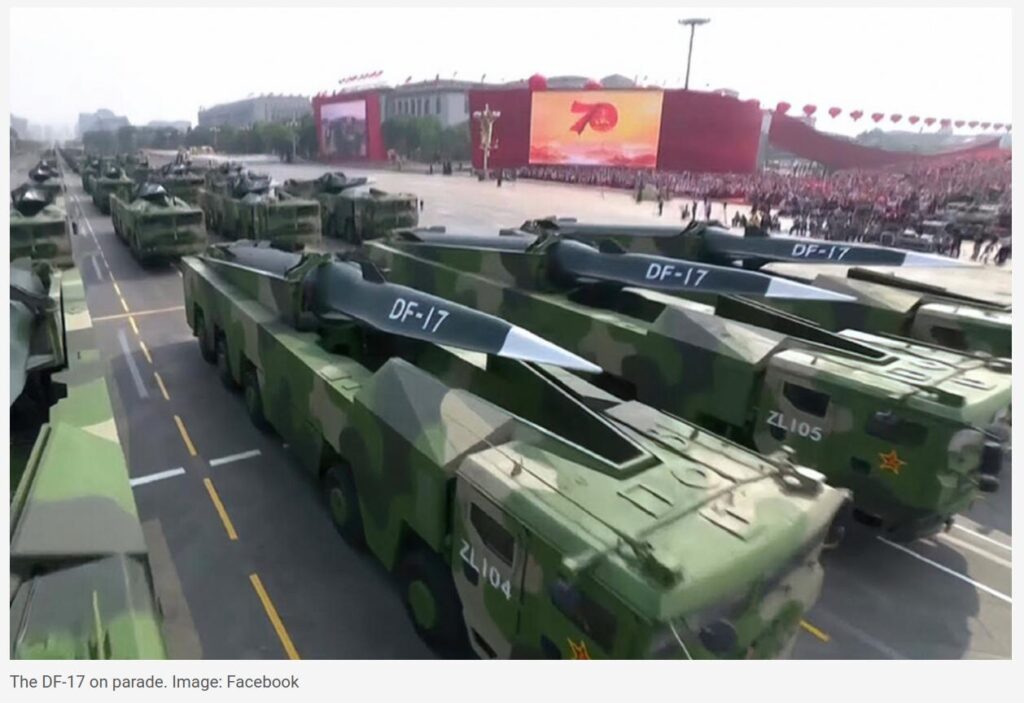
Those launches may have intended to show that China can effectively “box in” Taiwan with long-range precision fires alongside a persistent blockade of warships and submarines.
The emergence of hypersonic anti-ship missiles puts the importance of carriers as the mainstays of modern naval warfare into question.
As noted by Jon Harper in a 2019 article in National Defense Magazine, hypersonic missiles such as the YJ-21 – unlike conventional ballistic missiles – can maneuver during their terminal phase to evade shipboard missile defenses.
Harper also notes that while existing anti-ship missiles can be highly maneuverable, they typically fly at subsonic speeds, unlike hypersonic anti-ship missiles that give little to no window for their targets to react.
Thai Larb
Larb Moo is a popular dish made in Thailand. It’s a meat salad consisting of ground pork and many fresh and flavorful veggies and ingredients. It’s naturally on the low carb side, but I made keto Thai Larb by omitting toasted rice and using toasted cashews instead. This also makes my version paleo and Whole30 friendly as well! If you like meat and veggies in a tangy, semi spicy homemade sauce, this Thai Larb recipe will blow you away!

What You’ll Need to Make Keto Thai Larb Recipe
Before you get started, gather the ingredients needed to make Larb Moo, including:
- Cashews: Cashews are used as a paleo replacement for toasted rice, and adds crunch to the recipe. Make sure you’re using raw cashews to toast them yourself.
- Avocado oil: I love avocado oil because it’s great for high heat cooking, and doesn’t add any flavor to the final dish. If you don’t have avocado oil, feel free to use any other cooking oil of your choice.
- Shallots: If you can’t find shallots, you can use onions instead.
- Ground pork: Ground chicken or turkey can also be used if you don’t consume pork.
- Lime juice
- Coconut aminos: A paleo and Whole30-friendly alternative to soy sauce. It’s delicious and adds a slight natural sweetness as well!
- Fish sauce: Fish sauce is a crucial flavor in Thai cooking, and adds a delicious umami saltiness. This is my favorite brand of fish sauce with high quality, clean ingredients.
- Thai Chili Flakes: Also called prik bon, you can get these at your local Asian mart or online.
You’ll need a few other ingredients, including green onions, chopped cilantro, mint leaves, lettuce, and cucumbers.
Ingredients
- 1 pound ground chicken
- 1/2 cup chopped fresh cilantro
- 1/4 cup lime juice (about 2 limes)
- 1 to 2 tablespoons seeded and chopped jalapeno chiles*
- 3 large garlic cloves, minced
- 1/3 cup chopped scallions
- 2 tablespoons fish sauce
- 1 cup chicken broth
- Salt
- Large whole leaves of iceberg lettuce
- Sliced cucumbers, chopped cilantro and lime wedges (garnish)
- Hot rice (optional)

Instructions
- In large bowl, combine chicken, cilantro, lime juice, chiles, garlic, green onions and fish sauce.
- Bring broth to simmer in wok or large frying pan.
- Add chicken mixture and stir, breaking up mixture, until cooked through but not brown, and broth has evaporated.
- Spoon off any fat that may have melted out.
- Add salt to taste.
- Chill or serve at room temperature on lettuce leaves.
- Add garnishes.
- Serve with hot rice.
What If I Can’t Find Thai Chili Flakes?
If you’re unable to find Thai chili flakes, you can use any chili flakes that you can get at the grocery store. I find that Korean chili flakes, or gochugaru, is a close substitute.
Do I Need to Use Fresh Lime Juice for ?
Using fresh lime juice while preparing the Larb Moo is best. However, if you don’t have fresh lime, you can use lime juice from a bottle. You may need a bit less since I find that bottled lime juice is more concentrated in flavor.
Which Type of Lettuce Should I Use When Serving?
You can use romaine lettuce, butter lettuce, or even shredded iceberg lettuce when you’re serving paleo Thai Larb. I personally prefer butter lettuce and find that it holds up well.

Thai Larb Recipe Tips and Suggestions
If you taste the Larb Moo and feel like it needs to be a bit saltier, you can add more fish sauce to it. The fish sauce also brings a level of saltiness to the dish that enhances the flavor of the pork and vegetables.
When you want to make the dish a bit spicier, you can add more of the chili flakes to it. If you can’t tolerate spiciness, you can omit the chili flakes or decrease the amount when preparing this Keto Thai Larb dish.
How to Store Leftovers
Store your cooked pork and vegetables together, but store your lettuce and cucumbers in a separate container. Put these containers in the fridge to keep your ingredients fresh. You can assemble more of the Larb Moo when you’re ready to eat it, adding the ground pork and vegetables to a bed of lettuce with cucumbers.

NATO is going to get us ALL killed
Excellent and informative program. Really enjoyed it.

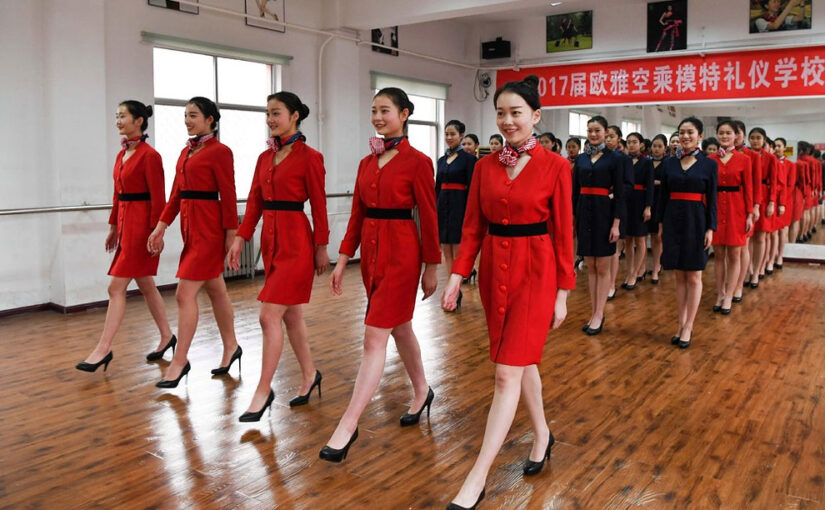

The billboard does not say ”Moscow is preparing for tomorrow’s historic day. There will be no turning back. 21.02.23”. This is a total lie. Total misinformation. The billboard says “Power is in the truth and the truth is behind us” (сила в правде А правда за нами) And, no, Putin did not nuke NATO. Maybe it’s time to end the BS schizophrenic scaremongering.
Calm down, Jack. It was from Hal Turner, not MM. Don’t get mad at the messenger, Jeeze! Besides, your comment should be in the next thread, and not this one.